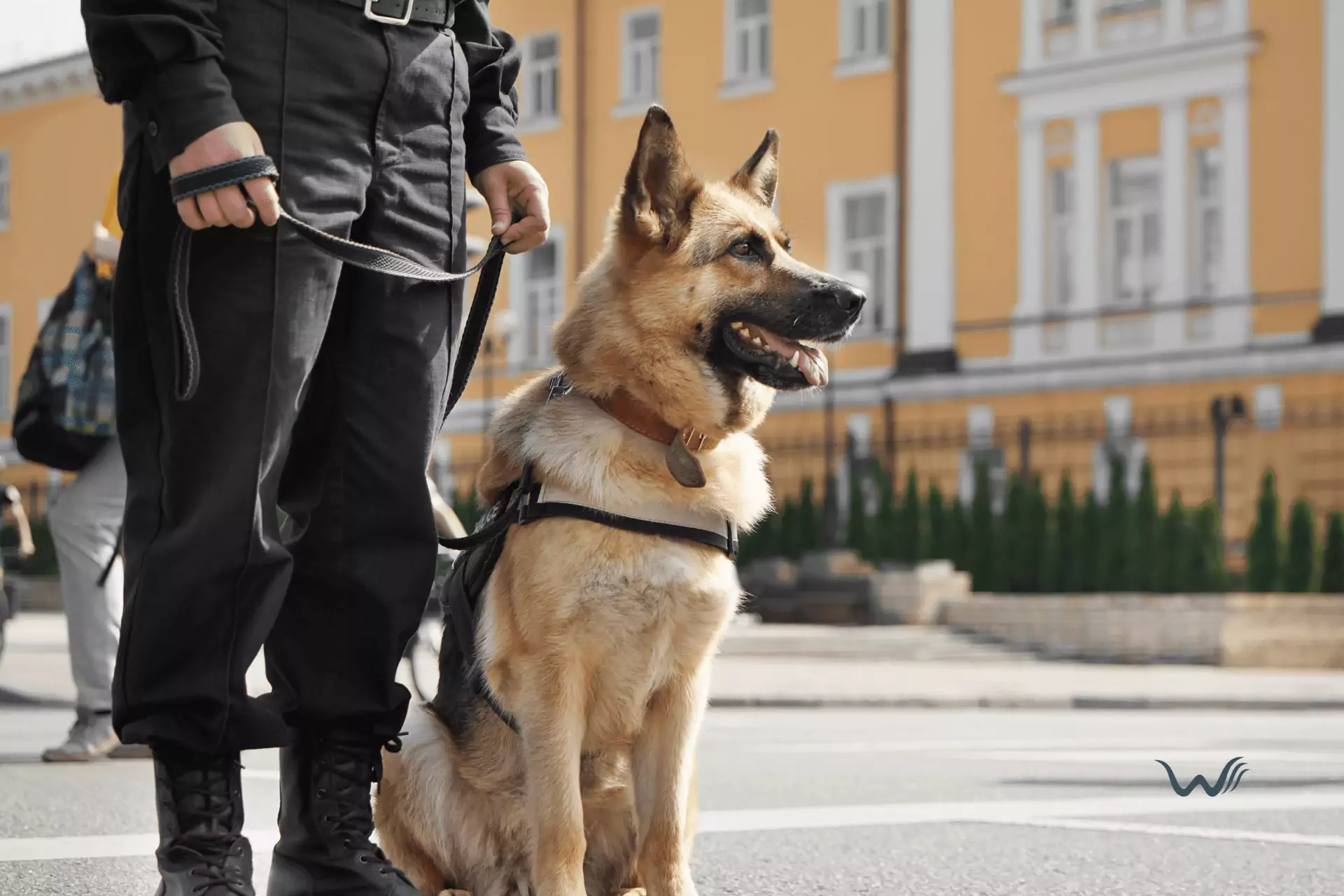

How To Spot An Emotional Support Animal In Public
by Haley Mills
Last updated: April 22, 2024
Verified and Approved by:
Angela Morris,
MSW, LCSW
Fact Checked

Have you ever been out in public and noticed someone with their furry companion by their side, providing them with comfort and support? Chances are, you may have just spotted an emotional support animal. Emotional support animals play a vital role in the lives of many individuals who struggle with emotional or psychological disabilities. In this article, we will explore how to spot an emotional support animal in public, understand the legal rights and protections they have, and discuss the appropriate etiquette when interacting with these animals.
Emotional support animals are not your average pets. They are specially trained to provide comfort, companionship, and emotional support to individuals suffering from anxiety, depression, PTSD, or other mental health disorders. These animals can be of various species including dogs, cats, rabbits, or even birds. While they may not have the same training level as service animals, emotional support animals are protected by certain laws that grant their owners the right to have them in housing and travel with them on airplanes. By understanding the role of emotional support animals and recognizing their legal rights, we can create a more inclusive and understanding environment for those who rely on these animals for emotional support.
Understanding the Role of Emotional Support Animals
You may already know the basics of emotional support animals, but let’s delve deeper into their role and how to spot them in public. Emotional support animals (ESAs) provide comfort and support to individuals with emotional or psychological disabilities. Unlike service animals, specifically trained to perform tasks for their handlers, ESAs provide emotional support simply by being present. These animals can help alleviate symptoms of anxiety, depression, and other mental health conditions, making it easier for their owners to navigate their daily lives.
ESAs are not just limited to dogs and cats; they can include many animals, such as rabbits, birds, and even reptiles. However, it’s important to note that not all animals can serve as emotional support animals. To qualify, the animal must be prescribed by a licensed mental health professional and their presence must be necessary for the individual’s well-being. This means that ESAs are not just pets, but rather an essential part of the owner’s mental health treatment.
Spotting an emotional support animal in public can be a bit tricky, as they do not have the same rights and privileges as service animals. While service animals can accompany their handlers in all public spaces, including restaurants and stores, ESAs are only protected under the Fair Housing Act and the Air Carrier Access Act. This means they are allowed in housing and on flights, but their access to other public spaces may vary. However, some establishments may choose to allow ESAs on their premises, so it’s always best to check with the specific location beforehand.
Recognizing the Legal Rights and Protections of Emotional Support Animals
Spotting an emotional support animal in public means recognizing the legal rights and protections they have. Under the Fair Housing Act, individuals with emotional support animals are protected from discrimination regarding housing. This means that landlords cannot deny someone housing simply because they have an emotional support animal. Additionally, emotional support animals are allowed in housing that has a no-pets policy, as long as the individual has a valid letter from a mental health professional stating the need for the animal.
In addition to housing protections, emotional support animals also have rights regarding air travel. The Air Carrier Access Act allows individuals with emotional support animals to have their animal accompany them in an aircraft cabin, free of charge. However, there are certain requirements that must be met, such as providing documentation of the need for the animal and ensuring that the animal is well-behaved and does not pose a threat to others. Understanding these legal rights and protections makes it easier to spot and identify emotional support animals in public settings.
Identifying Common Types of Emotional Support Animals
The most common types of emotional support animals can be identified by observing their behavior and characteristics in public settings. One of the most prevalent types of emotional support animals is dogs. These animals are often seen wearing a vest or harness that identifies them as an emotional support animal. They are well-behaved, calm, and responsive to their owner’s needs. Dogs are known for their loyalty and ability to provide comfort and support to individuals with emotional or mental health issues.
Another common type of emotional support animal is a cat. Cats are known for their soothing presence and independent nature. They can provide emotional support by simply being present and offering companionship. Cats are often seen with their owners in public places, such as cafes or parks. They may display affectionate behaviors, such as purring or rubbing against their owner, which can help alleviate stress and anxiety.
Emotional support animals can come in various forms, but the most common types are dogs and cats. Observing their behavior and characteristics in public settings makes it possible to identify these animals and understand their role in providing emotional support to their owners.
Observing Behavioral Cues and Indications of an Emotional Support Animal
Observe an emotional support animal’s behavioral cues and indications in public to recognize their presence easily. One of the key behaviors to look for is calmness and attentiveness. Unlike regular pets, emotional support animals are trained to be well-behaved and focused on their owner’s needs. They are often seen sitting or lying down quietly, without causing any disruptions or distractions. Additionally, emotional support animals may display a strong bond with their owner, constantly seeking their attention or staying close by their side. This attachment can be observed through the animal’s tendency to follow their owner’s movements and maintain eye contact with them.
Another essential cue to look for is the animal’s response to their owner’s emotions. Emotional support animals are trained to provide comfort and support to individuals who may be experiencing emotional distress. Therefore, they may exhibit behaviors such as leaning against their owner or placing a paw on their leg when they sense that their owner is upset or anxious. These subtle actions are indications of the animal’s ability to sense and respond to their owner’s emotional state. By observing these behavioral cues, you can easily identify an emotional support animal in public and understand their vital role in providing emotional support to their owners.
Respecting Boundaries and Etiquette When Interacting with Emotional Support Animals in Public
Respect the boundaries and show proper etiquette when encountering an emotional support animal in public. It is important to remember that emotional support animals are not the same as service animals and have different rights and responsibilities. While it may be tempting to approach, pet, or interact with an emotional support animal, it is crucial to ask for permission from the owner before doing so. Some emotional support animals may not be comfortable with strangers, and it is essential to respect their boundaries.
Additionally, it is important to keep a respectful distance from the animal and not to distract or disrupt their work. Emotional support animals are trained to provide comfort and support to their owners, and any interference can hinder their ability to perform their duties. It is also crucial to remember that emotional support animals are not required to perform specific tasks like service animals and are primarily there to provide emotional support to their owners. Therefore, it is essential to avoid asking the owner about their disability or why they need an emotional support animal, as this information is personal and should be respected.
By respecting the boundaries and showing proper etiquette when encountering an emotional support animal in public, we can ensure that both the animal and its owner feel comfortable and respected. Remember to always ask for permission before approaching or interacting with the animal, keep a respectful distance, and avoid asking personal questions. Doing so can create a more inclusive and understanding environment for everyone.
Frequently Asked Questions
What are the legal consequences for misrepresenting a pet as an emotional support animal?
The legal consequences for misrepresenting a pet as an emotional support animal can vary. In some states, it may be considered a misdemeanor, resulting in fines or even imprisonment.
Are there any requirements or certifications for emotional support animals?
There are no specific requirements or certifications for emotional support animals. However, they must provide comfort and support to individuals with emotional or psychological disabilities, as a mental health professional prescribes.
Can an emotional support animal be denied access to certain public places?
Yes, emotional support animals can be denied access to certain public places. While they are allowed in many places, such as housing and transportation, businesses and restaurants have the right to refuse entry.
How can I approach an individual with an emotional support animal without invading their privacy or personal space?
Approach an individual with an emotional support animal respectfully by asking if it’s okay to interact with their furry companion. Avoid invading their privacy or personal space by maintaining a respectful distance.
Are there specific guidelines or regulations for businesses and establishments regarding emotional support animals?
Yes, there are specific guidelines and regulations for businesses and establishments regarding emotional support animals. These guidelines include allowing them access to public places and making reasonable accommodations for their owners.
Certify Your Emotional Support Animal Today

Why You Can Rely on Us?
At Wellness Wag, we believe your pet deserves care rooted in both science and compassion. Each article is carefully researched, written in clear language for pet owners, and then reviewed by qualified professionals to ensure the information is evidence-based, current, and practical for real-life care. Our goal is to help you feel confident in making informed decisions about your pet’s health and well-being.
Reviewed by
Angela Morris, MSW, LCSW
Angela is a licensed clinical social worker with 20 years of experience in patient advocacy and community mental health. She has assisted numerous clients with ESA evaluations and brings a deep understanding of disability accommodations, ensuring that all information is accurate, supportive, and practical.

Written by :
Haley Mills
Last Updated :
April 22, 2024












